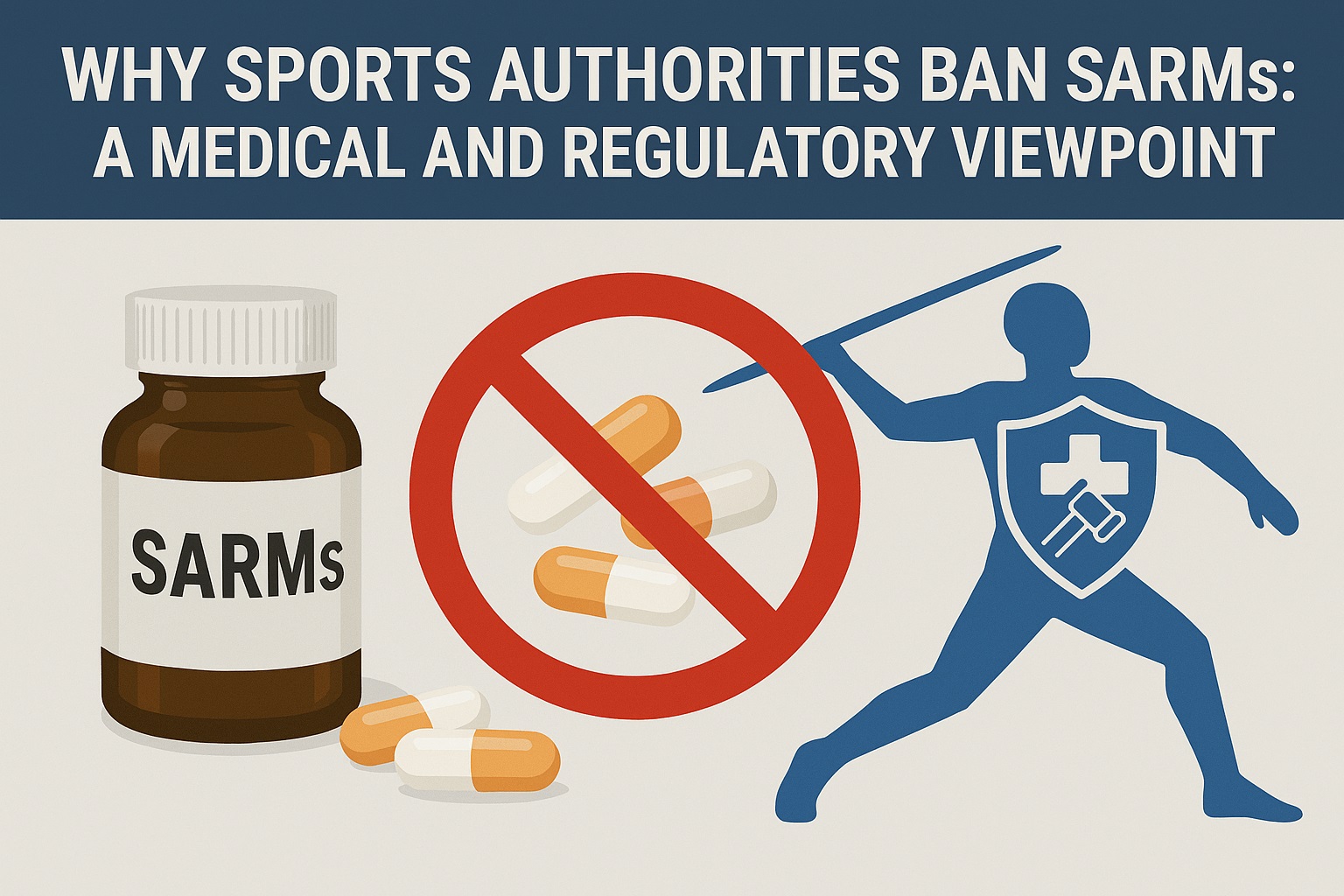Why Sports Authorities Ban SARMs: A Medical and Regulatory Viewpoint

Competitive sports are built on fairness, discipline, and skill. Yet many compounds being studied in labs for their potential benefits are restricted when it comes to professional athletics. Among these are SARMs, or Selective Androgen Receptor Modulators. They are often mentioned in fitness discussions, research studies, and even online forums. But why exactly are sports authorities strict about their use? Let’s break it down in simple terms, from both a medical and regulatory perspective.
What Are SARMs and Why Are They Popular in Research?
SARMs are compounds that interact with androgen receptors in a more selective way compared to traditional anabolic agents. Instead of affecting the whole body, they target specific tissues like muscle and bone. This makes them especially interesting for scientists who want to understand how strength, recovery, and body composition can be supported at a cellular level.
Because of this scientific curiosity, you can find SARMs for sale from trusted research suppliers. These products are not intended for competitive athletes but for controlled studies where researchers can carefully examine their effects.
Why Sports Authorities Ban SARMs
Sports organizations such as the World Anti-Doping Agency (WADA) enforce strict rules to ensure fair play. If one athlete uses a compound that enhances recovery or muscle growth beyond normal training, it creates an uneven playing field.
One well-known compound, RAD-140 (Testolone) for sale, has been studied for its possible role in supporting lean muscle tissue. While this is valuable in research settings, using it in competition could give athletes an unfair edge. This is the main reason why regulators restrict these substances – not because they are irrelevant, but because their use in sports could disrupt fairness.
The Role of Medical Ethics in Regulation
Medical ethics is about doing what’s right not only for individuals but also for the community. In sports, that means protecting athlete health, ensuring honest competition, and avoiding unnecessary risks. Restricting SARMs is not about stopping science but about creating a safe and level field for athletes.
For researchers, however, SARMs remain a subject of interest. Take Ostarine, for example. Scientists often buy Ostarine (MK-2866) for studies focused on lean mass retention and recovery support. These investigations help expand knowledge without interfering with competitive fairness.
Notable SARMs in Modern Research
Among the many SARMs being explored, two have gained significant attention in ongoing studies:
- RAD-140 (Testolone): This compound is often examined for its potential effects on muscle tissue support and strength. Researchers value it because it may target muscle receptors without as many off-target actions.
- Ostarine (MK-2866): Another widely studied option, Ostarine is known for its potential role in maintaining lean mass, especially during recovery periods. You can also buy Ostarine (MK-2866) for research purposes from suppliers who provide properly tested samples.
These examples show why SARMs attract scientific interest, even though professional athletes cannot use them in competition.
Why Purity and Testing Matter
Another reason regulations exist is quality control. In research, purity and transparency are critical. Lab-tested compounds give researchers confidence that what they are studying is accurate and consistent. Without these safeguards, both science and athlete safety could be at risk.
That is why suppliers emphasize testing and provide clear documentation. For athletes, these rules mean protection. For scientists, it means reliable data that contributes to the larger body of knowledge.
The Bigger Picture
It’s important to understand that bans do not mean rejection of research. Sports authorities regulate SARMs because their focus is fairness and athlete safety. Outside of professional competition, researchers continue to investigate these compounds for their possible benefits.
This dual approach allows progress in science while ensuring that sports remain centered on training, skill, and dedication rather than chemical advantages.
Final Thoughts
The discussion around SARMs highlights the balance between science and sports. On one side, researchers continue to study these compounds to better understand how they interact with muscle, bone, and recovery processes. On the other hand, sports authorities regulate their use in competitions to keep events fair, safe, and focused on natural ability.
This approach shows that banning certain substances in athletics is not about stopping scientific progress – it is about ensuring equal conditions for all athletes. Research can continue in labs, while sports remain grounded in discipline, training, and skill.
The post Why Sports Authorities Ban SARMs: A Medical and Regulatory Viewpoint appeared first on Ten Sports TV.
















































